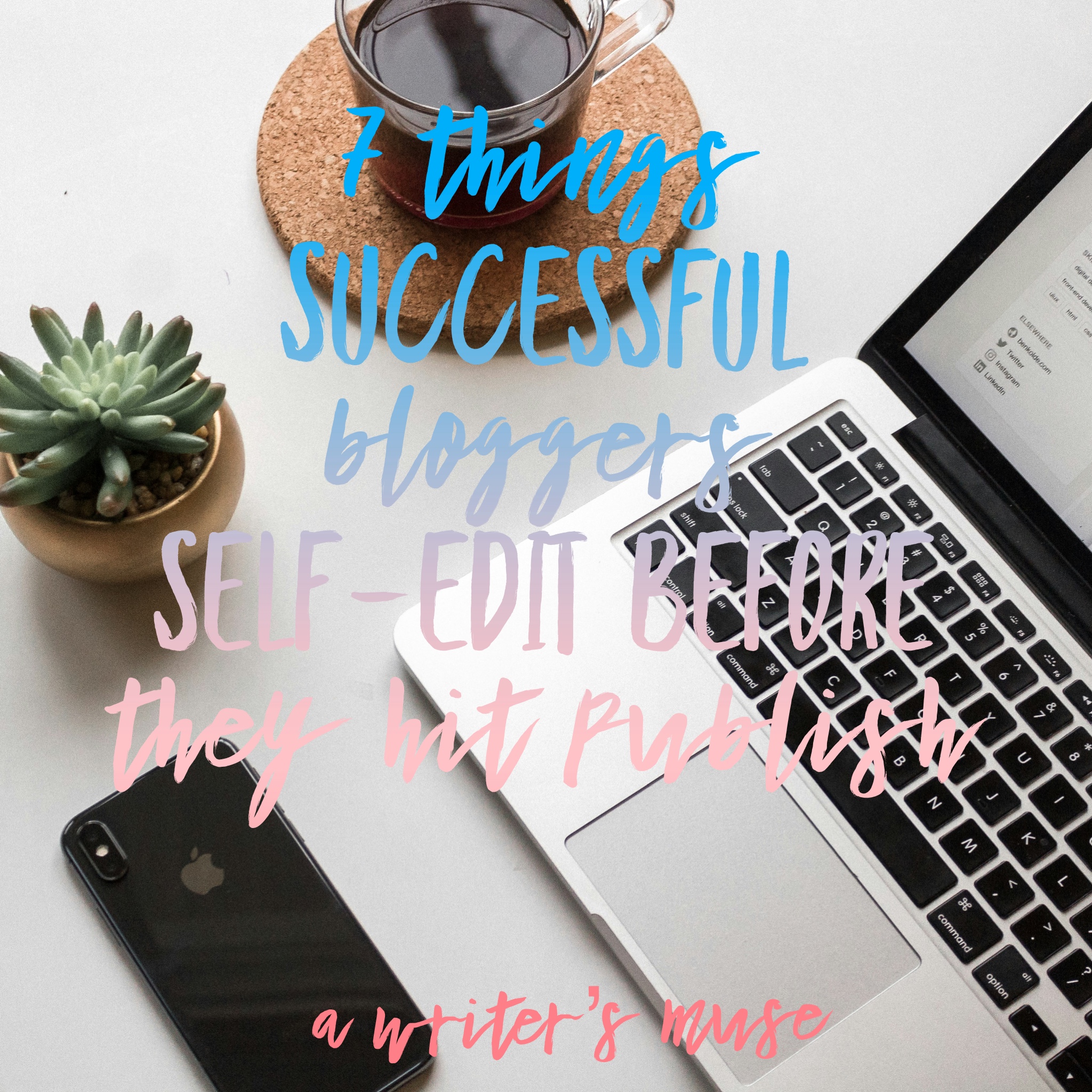Do you self-edit your blog posts thoroughly before you hit publish? 67% of bloggers say they are successful. Do you think you are a successful blogger? Have you made it your goal to blog successfully? What does that look like for you?
When writing a blog post, you want to create a blog post you can be proud of. When you write and then refine your work to excellence, you can take pride in your work. Self-editing helps you achieve this when you check the following items in each new post.
We all take some level of pride in our work:
- To know that you did your best work
- Walking away from a post that shows your best efforts
- Knowing that your work is error-free
I mean, isn’t that what you want—to do your best work? Hopefully, this is how we identify success.
Self-Edit your posts for success
No matter how you define blogging success, blogging remains a creative effort and taxing attention to detail. Our writing must reflect a clean presentation to attain interest, and we have just a few minutes or less to capture the interest of our readers.
So, use the checklist below to check your work. You will be glad you did.
#1 Does It Make Sense?
First, and foremost, your post must make sense. Going on a long stream of consciousness without a real point may win you something, but it won’t keep your readers. I admit, that sometimes consciousness comes in the form of free write, but really you should save that for your journals.
Sometimes, we know what we mean, but others cannot understand it. When you pour out your emotions or your words without much of a direction, you lose people in your train of thought. Clarifying your message helps your readers empathize with your message.
Refine your message using a writing outline of a beginning, middle, and end. Stick to a structure, and then check for clarity.
#2 Check Your Point of View
When you write a story you generally choose the first-person point of view or the use of I and we. Sometimes it may be the third person point of view, using he, she, or they.
Finally, if you pen an article or blog post, you choose the point of view, you, identify and speak to your readers.
When you write a blog post you may find yourself shifting your points of view. This really remains a common error, so check to make sure that your point of view is consistent.
#3 Edit For Grammar
Most of us use the Grammarly extension, which you can use partly for free if you like. But, do check your grammar and usage to make sure that your sentences make your point clear.
The favored grammar extensions include Grammarly and Language Tools. Both can be found in the Google Chrome extension store.
Editing your posts for grammar really helps create a solid piece of work and will make for easier reading for your followers.
#4 Edit For Punctuation And Spelling
Even if you use a grammar tool, re-read your blog post to ensure that the proper words are used throughout. Watch for synonyms that may be used.
Further, while the extensions do use artificial intelligence, they are not human and fail to understand all the human nuances of your writing. Depending solely on a writing tool may leave room for errors. Run the grammar tool, but then check up behind it, looking for glaring errors.
#5 Identify Your Topic Keyword
Whatever your topic and its keywords are for your blog post, make sure that the word or words are used throughout your writing. Ensure that the keyword, or even key phrase, is sprinkled throughout the whole blog post.
Further, when you choose an image, you need to search for it based on the main keyword you use. So, in your alt description in the blog editor, add in the keyword into your description. Further, you might even add it as part of the title of your image.
#6 Insert Proper Headings
When you write one long diatribe of words on a page, it becomes extremely difficult to follow. Even if you have a sequence to your article, a lack of headings creates confusion about which part is the beginning, middle, and end.
Think of writing a blog post as writing a book. In a book, you have chapters that separate the text into larger sections. And, in an article, you separate your sections with headings. This makes the whole piece easier to digest.
Add headings that make sense to each section, and lead your readers to follow the point you are making. This way, you carry them on a journey to the end of your post and don’t leave them stranded halfway through, wondering where you are going with your ideas.
#7 Create An Amazing Title
Finally, we all know how important this is in order to grab a reader’s attention. Searching for title creators, or using plugins already installed in your blog, help create the best converting and engaging title you can. Plus, *Googling* your possible title in the search bar helps you observe what other bloggers use in their blog posts on your topic.
No matter what you choose, make sure that your blog post title fits the rest of your content. People quickly leave your post when they realize that the title you used does not match the writing on the page.
Self-edit equals success
The content of your blog resonates with the right readers, and some of them may even overlook your errors. However, when you use the self-edit checklist, you make your writing a rock star. You check for overall appearance and readability to create a great reading experience for your visitors.
When you look at the content of each blog post and check to make sure that you have completed each task, you create success for yourself and your blog.
Writing the post is only the first step to refining that message and polishing it until it shines to the finish. Check your blog posts so that you gather readers and develop a relationship with your audience that will last.

